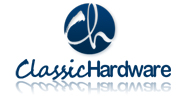Strip brushes come in various types, each designed for specific applications. The versatility of strip brushes makes them suitable for a wide range of industries. Here are some common types of strip brushes, their usage, and materials:
- Usage: Metal channel strip brushes are often used for industrial applications such as sealing, guiding, conveyor cleaning, and static dissipation.
- Materials: Brush filaments can be made from materials like nylon, polypropylene, horsehair, or metal wire.
- Flexible Back Strip Brushes:
- Usage: Flexible back strip brushes are designed to conform to irregular shapes and surfaces. They are commonly used for sealing, dusting, and guiding applications.
- Materials: Filament materials vary and may include nylon, polypropylene, horsehair, or other materials.
- Usage: Coil brushes are typically used in conveyor belt cleaning applications, where they can remove debris and materials from the belt surface.
- Materials: Filaments can be made from materials like steel wire, nylon, or abrasive nylon, depending on the application.
- Usage: Seal strip brushes are used for creating a barrier against light, dust, dirt, and moisture. They are commonly applied in doors, windows, and various machinery.
- Materials: Filament materials include nylon, polypropylene, horsehair, or other materials, and the backing is often made of metal or plastic.
- Usage: Safety brushes are installed on escalators to prevent foreign objects from getting caught in the moving parts, enhancing safety.
- Materials: Filaments are usually made from nylon or other durable materials.
- Usage: Elevator brushes are used to seal gaps in elevator doors, preventing the entry of dust, dirt, or insects.
- Materials: Filaments can be made from materials like nylon, polypropylene, or other synthetic materials.
- Usage: Door brush seals are employed for creating a weatherproof seal around doors to prevent drafts, dust, and insects from entering.
- Materials: Filaments may include nylon, polypropylene, or horsehair, and the backing is typically made of aluminum or other metals.
- Usage: Static elimination brushes are designed to dissipate static electricity from surfaces, preventing the buildup of electrostatic charge.
- Materials: Filaments are often made from conductive materials like metal or conductive synthetic fibers.
- Usage: Wire strip brushes are commonly used for cleaning, deburring, and surface preparation in industrial applications.
- Materials: Wire filaments can be made from materials like carbon steel, stainless steel, or brass.
- Conveyor Cleaning Brushes:
- Usage: Conveyor cleaning brushes are used for cleaning conveyor belts and removing debris to maintain operational efficiency.
- Materials: Filaments can be made from nylon, polypropylene, or abrasive materials depending on the cleaning requirements.
When selecting a strip brush, it’s important to consider the specific requirements of the application, such as the type of material being conveyed, environmental conditions, and the desired level of abrasion resistance.

